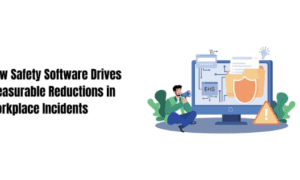Cloud technology has transformed how businesses handle their finances completely. Your financial information can now live online, where you can reach it from anywhere. Besides convenience, this shift improves accuracy and gives you better control over money.
This change isn’t just about storing data differently than before. Instead, cloud platforms actually change what’s possible with financial management and planning. So businesses of all sizes can now access tools that were once only for big corporations.
5 Ways Cloud Platforms Transform Finance Management
Modern cloud solutions address problems that businesses struggled with for decades. Each improvement makes financial management easier and more effective. Here’s how these changes help you appreciate cloud platforms.
1. Real-Time Financial Visibility
With cloud systems, you can see your current financial position instantly, anytime. Old systems required closing periods and generating reports manually. You would have to wait for financial updates. As such, it meant making decisions with outdated information.
Even your cash flow becomes visible in real-time instead of retrospectively. You will know exactly how much money you have. Besides the current, you can see what’s coming in and going out soon. Platforms like Agicap specialize in giving businesses this immediate financial clarity.
2. Automated Processes Save Time
Manual data entry wastes countless hours and creates frequent errors. With cloud platforms, you can connect to your bank accounts and import transactions automatically. Also, this automation eliminates most tedious financial tasks completely.
It allows you to create your invoice, payment reminders, and expense tracking automatically. Your team will be able to focus on analysis instead of data entry. It also handles recurring tasks like payroll and bill payments, which can run on schedules.
3. Better Cash Flow Forecasting
Predicting future cash needs becomes much more accurate with cloud tools. The software analyzes patterns and projects your financial position forward. Moreover, good forecasting prevents cash shortages before they become crises. You can model different scenarios to see how decisions affect finances. What happens if you hire someone or make a large purchase? This scenario modeling will reduce your risk significantly. It will give you early warnings that alert you to potential problems weeks in advance. You will also have time to adjust plans or secure funding if needed. This way, surprises are rare when you’re working with predictive data.
4. Collaboration Across Your Team
Multiple people can work on financial tasks simultaneously without conflicts. Cloud platforms manage permissions so everyone sees what they need. This collaboration becomes seamless instead of creating version control nightmares. Your team can access the same data you see in real-time. So, there’s no more emailing files back and forth or scheduling meetings. Besides efficiency, this shared access improves accuracy and communication.
5. Integration With Other Business Tools
Cloud finance platforms can connect with other software you already use. It will give you access to your sales data, inventory, and financial information so they work together seamlessly. These connections eliminate duplicate entries and keep everything synchronized. It’s possible for you to link your e-commerce platforms, payment processors, and banking systems all together.
Conclusion
Moving to cloud platforms might seem overwhelming at first. However, most transitions are smoother than businesses expect them to be. Modern platforms are designed to make migration as easy as possible.
You can start by identifying your biggest financial management pain points at the moment. Then choose the best cloud solutions that can solve the problems you’re experiencing now.



































